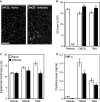Immunity to gastrointestinal nematodes: mechanisms and myths
- PMID: 24942690
- PMCID: PMC4141702
- DOI: 10.1111/imr.12188
Immunity to gastrointestinal nematodes: mechanisms and myths
Abstract
Immune responses to gastrointestinal nematodes have been studied extensively for over 80 years and intensively investigated over the last 30-40 years. The use of laboratory models has led to the discovery of new mechanisms of protective immunity and made major contributions to our fundamental understanding of both innate and adaptive responses. In addition to host protection, it is clear that immunoregulatory processes are common in infected individuals and resistance often operates alongside modulation of immunity. This review aims to discuss the recent discoveries in both host protection and immunoregulation against gastrointestinal nematodes, placing the data in context of the specific life cycles imposed by the different parasites studied and the future challenges of considering the mucosal/immune axis to encompass host, parasite, and microbiome in its widest sense.
Keywords: cytokines; inflammation; parasitic helminth.
© 2014 The Authors Immunological Reviews Published by John Wiley & Sons Ltd.
Figures








References
-
- Maizels RM, et al. Immunological modulation and evasion by helminth parasites in human populations. Nature. 1993;365:797–805. - PubMed
-
- Anderson RM, May RM. Helminth infections of humans: mathematical models, population dynamics, and control. Adv Parasitol. 1985;24:1–101. - PubMed
-
- McSorley HJ, Loukas A. The immunology of human hookworm infections. Parasite Immunol. 2010;32:549–559. - PubMed
-
- Jackson JA, et al. T helper cell type 2 responsiveness predicts future susceptibility to gastrointestinal nematodes in humans. J Infect Dis. 2004;190:1804–1811. - PubMed
-
- Bell RG. IgE, allergies and helminth parasites: a new perspective on an old conundrum. Immunol Cell Biol. 1996;74:337–345. - PubMed
Publication types
MeSH terms
Grants and funding
LinkOut - more resources
Full Text Sources
Other Literature Sources

